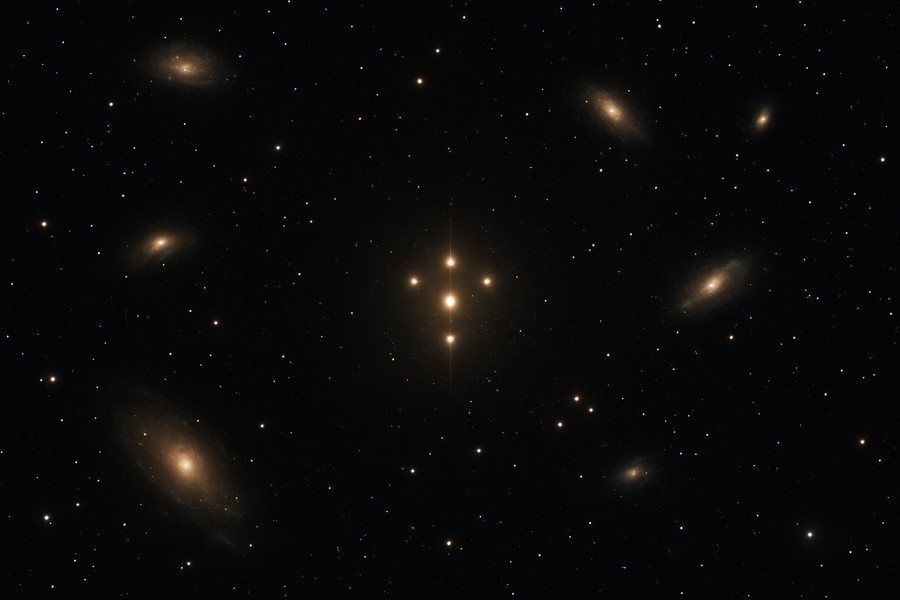
Unveiling the Secrets of the Universe with a Peculiar Cosmic Formation
Imagine looking at an image of a cosmic formation that you've never seen before. This is exactly what happened to a group of scientists, who had the chance to examine an abnormal celestial snapshot. The image in question was a unique version of an "Einstein Cross" - a cosmic formation where the light from a galaxy far, far away is manipulated by the gravitational pull of other galaxies in front of it, resulting in four distinct images. What made this particular image stand out was an unexpected fifth image at the center.
Uncovering the Unseen
Researchers were initially dumbfounded by this fifth image. Such an event contradicts the typical understanding of an Einstein Cross. The additional image hinted at an extraordinary phenomenon. When investigated, it was found that a massive, unseen halo of dark matter was responsible for this anomaly. This invisible structure's existence was deduced through meticulous computer modeling and analysis.
Dark matter is a significant yet elusive component of the universe. It cannot be observed directly, but its presence is inferred from its influence on observable elements, such as the bending of light from distant galaxies. This unique Einstein Cross offers a rare opportunity to examine this invisible structure in detail.
The Journey of Discovery
The initial observation of this peculiar image was made in France. A group of scientists had been studying a far-off dusty galaxy. They noticed that the light from this distant galaxy split into five distinct images, instead of the expected four. Initially, they suspected a glitch in the data, but the persistent fifth image proved it wasn’t just a mistake.
Utilizing computer models, the researchers explored the gravitational lens that was responsible for bending the light. They found that the four visible galaxies causing this gravitational bending couldn't account for the unusual five-image pattern. It was only after considering a large, unseen mass - a halo of dark matter - that the model could match the observed pattern.
The Value of this Phenomenon
Not only does this atypical celestial formation look interesting, it holds immense scientific value. The magnification of the background galaxy caused by the lensing effect lets astronomers study its structure in greater detail than usual. It also provides a unique chance to learn more about the dark matter that surrounds the foreground galaxies.
This system acts like a natural laboratory, allowing both the distant galaxy and the invisible matter manipulating its light to be studied. For students and researchers alike, participating in this research has been an enriching experience. The collaboration across continents and time zones has underscored the value of diverse expertise and research approaches in understanding new discoveries.
Future Implications
The team is now expecting that future observations could reveal more features, such as outflowing gas from the galaxy. If these predictions are confirmed, it would strongly validate their models. Conversely, if the predictions are not confirmed, it would still provide them with new, valuable knowledge.
This discovery has been made possible through international collaboration and support for scientific research. Continued support for such studies promises to yield even more groundbreaking discoveries in the future.
